Syndromic Craniosynostosis: Complexities of Clinical Care
- PMID: 30976282
- PMCID: PMC6422147
- DOI: 10.1159/000495739
Syndromic Craniosynostosis: Complexities of Clinical Care
Abstract
Patients with syndromic craniosynostosis have a molecularly identified genetic cause for the premature closure of their cranial sutures and associated facial and extra-cranial features. Their clinical complexity demands comprehensive management by an extensive multidisciplinary team. This review aims to marry genotypic and phenotypic knowledge with clinical presentation and management of the craniofacial syndromes presenting most frequently to the craniofacial unit at Great Ormond Street Hospital for Children NHS Foundation Trust.
Keywords: Craniofrontonasal dysplasia; Fronto-orbital remodelling; Intracranial pressure; Syndromic craniosynostosis.
Figures



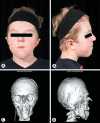
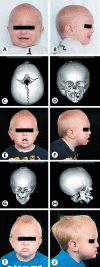
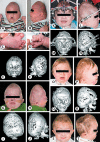
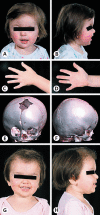
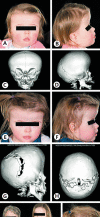
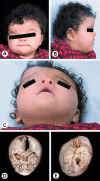


References
-
- Abu-Sittah GS, Jeelani O, Dunaway D, Hayward R. Raised intracranial pressure in Crouzon syndrome: incidence, causes, and management. J Neurosurg Pediatr. 2016;17:469–475. - PubMed
-
- Ahmad F, Cobb AR, Mills C, Jones BM, Hayward RD, Dunaway DJ. Frontofacial monobloc distraction in the very young: a review of 12 consecutive cases. Plast Reconstr Surg. 2012;129:488e–497e. - PubMed
-
- Anderson PJ, Hall C, Evans RD, Harkness WJ, Hayward RD, Jones BM. The cervical spine in Crouzon syndrome. Spine (Phila Pa 1976) 1997a;22:402–405. - PubMed
Publication types
Grants and funding
LinkOut - more resources
Full Text Sources

